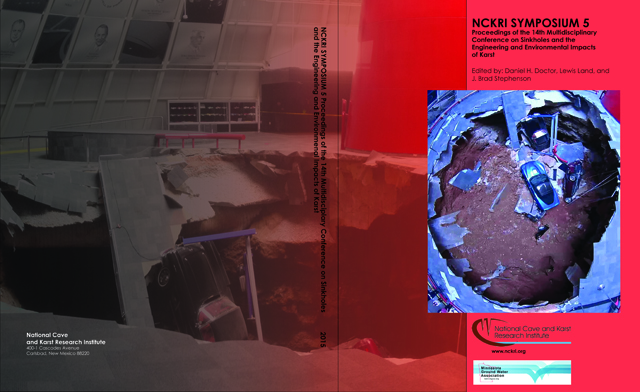Abstract
On February 12th, 2014, a sinkhole occurred at the National Corvette Museum in Bowling Green, Kentucky. The collapse happened inside part of the building known as the Skydome and eight Corvettes on display were lost into the void that opened in the concrete floor. In this region of Kentucky, known as the Pennyroyal sinkhole plain, subsidence and cover collapse sinkholes are commonly found throughout the landscape. This iconic karst region in the United States is also home to Mammoth Cave, the longest cave in the world, and thousands of other caves and karst features. Investigation of the sinkhole collapse began immediately while the Corvettes were extracted from the debris cone inside the void. Techniques used for investigation included water jet drilling, downhole cameras and drone footage, a microgravity surface survey, and mapping of the void and accompanying cave. After exploration of the sinkhole by karst researchers and compilation of the data, the cause of the sinkhole was determined to be a cave roof collapse in a breakout dome. The cave underlying the collapse is about 220 feet (67 m) long and 39 feet (12 m) wide on average with an average depth of 65-85 feet (20-25 m). The structural integrity of the bedrock (thinly interbedded limestone and chert located at a contact between two major limestone units) is lacking in the area. Talus and breakdown are abundant in the cave in which the sinkhole formed. The progression of the roof failure likely occurred over a long span of time, eventually giving way due to a variety of conditions, including speleogenetic and climatic factors. Current remediation is underway and involves filling the sinkhole with gravel and sand, then installing a micropile supported concrete slab floor under the building. Future changes to the structure will be monitored to detect any activity.
Rights Information
DOI
http://dx.doi.org/10.5038/9780991000951.1079
Cars and Karst: Investigating the National Corvette Museum Sinkhole
On February 12th, 2014, a sinkhole occurred at the National Corvette Museum in Bowling Green, Kentucky. The collapse happened inside part of the building known as the Skydome and eight Corvettes on display were lost into the void that opened in the concrete floor. In this region of Kentucky, known as the Pennyroyal sinkhole plain, subsidence and cover collapse sinkholes are commonly found throughout the landscape. This iconic karst region in the United States is also home to Mammoth Cave, the longest cave in the world, and thousands of other caves and karst features. Investigation of the sinkhole collapse began immediately while the Corvettes were extracted from the debris cone inside the void. Techniques used for investigation included water jet drilling, downhole cameras and drone footage, a microgravity surface survey, and mapping of the void and accompanying cave. After exploration of the sinkhole by karst researchers and compilation of the data, the cause of the sinkhole was determined to be a cave roof collapse in a breakout dome. The cave underlying the collapse is about 220 feet (67 m) long and 39 feet (12 m) wide on average with an average depth of 65-85 feet (20-25 m). The structural integrity of the bedrock (thinly interbedded limestone and chert located at a contact between two major limestone units) is lacking in the area. Talus and breakdown are abundant in the cave in which the sinkhole formed. The progression of the roof failure likely occurred over a long span of time, eventually giving way due to a variety of conditions, including speleogenetic and climatic factors. Current remediation is underway and involves filling the sinkhole with gravel and sand, then installing a micropile supported concrete slab floor under the building. Future changes to the structure will be monitored to detect any activity.

